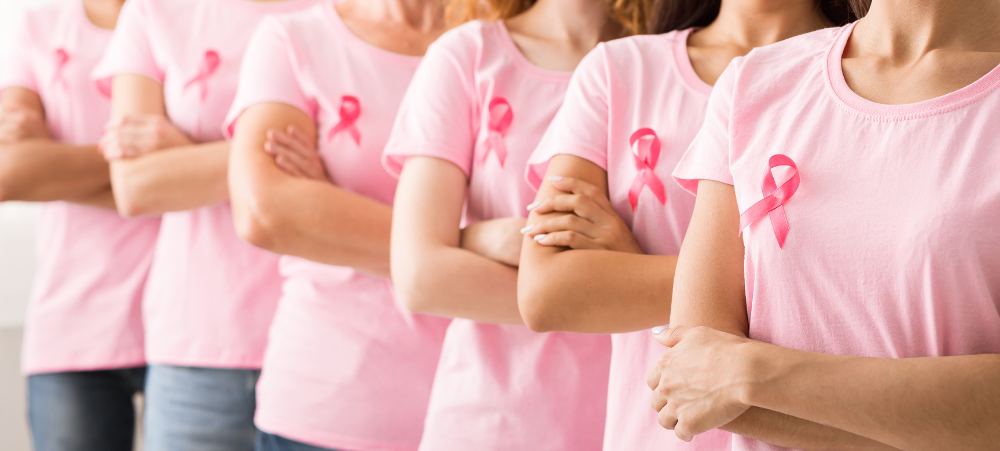The World Health Organization creates awareness around breast cancer in October. First initiated in October 1985, Breast Cancer Month has grown exponentially globally and this year is no exception. According to the Cancer Association of South Africa (CANSA), it’s far better to have an early-stage diagnosis, as it results in better breast cancer treatment and long-term survival. CANSA recommends monthly breast self-examination, annual medical check-ups, and screening.
Radiologists from the SCP Radiologist Practice and Dr Lizanne Langenhoven, who specialises in the treatment of breast cancer, address some of the concerns around breast cancer screening.
If early detection is recommended and provides the best outcome, why are women reluctant to screen for breast cancer? An informal survey amongst women, who are hesitant to go, even though they have the means to go, shows that the top reasons include the following:
It’s going to be too painful
Many women still rely on their mother’s experience with early mammograms which were painful. Mammography machines have progressed exponentially since the early days, so the level of discomfort experienced during the procedure is now significantly reduced. Modern technology and digital equipment allow us to use less compression and still obtain quality imaging. Also, the amount of pressure is different for each individual, depending on the breast size and composition. Pressure is often manually adjusted so speak to your mammographer if you experience any discomfort.
Fear of exposure to radiation
A mammogram uses relatively low-dose radiation. The total dose is approximately 0.5 mSv (2D mammogram). To put it into perspective, we are exposed to 3.0 mSv of background radiation from our natural surroundings per year. Radiologists also strictly follow what’s known as the ALARA principle – to always apply radiation “as low as reasonably achievable”. The benefits of mammography thus far outweigh the risks from this low dose radiation.
Fear of finding out you have breast cancer
Dr Langehoven says, ‘The good news is that our understanding of the different subtypes of breast cancer has improved significantly over the past few years! We no-longer follow a one-type-fits-all approach and many women may even safely be spared chemotherapy in a curative setting.
‘As with everything else in life, it is easier to address a ‘small’ or ‘early’ problem than it is to address a much larger problem! I’ve seen breast cancer diagnosed at a size of 2mm on mammogram – meaning that treatment is tailored to a very low risk situation. In short, the earlier we become aware of an existing problem, the sooner it can be addressed and with much less invasive treatment.’
I don’t go for mammograms, I only go for thermography
At present, thermography cannot substitute mammography but may be used as complementary screening. Dr Langenhoven cautions that thermography is not all it is cut out to be. In order for the cancer to give off heat signals, it has to be significant in size. Mammography on the other hand can detect changes in the breast before they progress to cancer. A mammogram therefore picks up the disease course much sooner than thermography.
Why mammography instead of ultrasound, which doesn’t use radiation?
Mammography is our workhorse. We look for masses, calcifications, and architectural distortion. Ultrasound is a supplementary investigation used to further evaluate morphology, blood flow, consistency of masses, and lymph nodes that are abnormal on a mammogram. Tomosynthesis is also supplementary, used to further evaluate architectural distortion seen on a mammogram. They all work together. With denser breasts mammography is less sensitive, which is when we add the supplementary investigations to improve the sensitivity of detection.
If am diagnosed with breast cancer I am going to die anyway, so I would rather not find out
This statement is not true in the current day and age where 90% of women with early breast cancer can be cured of their disease, says Dr Langenhoven. ‘In the same way we don’t drive cars from the 50’s, our treatment is no longer ancient either!’
The side-effect profiles of our new drugs are aimed at improving quality of life during treatment, and the fact that we now identify and treat 4 distinct subtypes of breast cancer means that we can target the specific growth-pattern at play and avoid unnecessary treatment.
Previously, because we didn’t know which women had aggressive breast cancers and who didn’t, all women were treated more or less the same up to a few years ago. This meant that women feared finding out they had breast cancer for fear of the radical and toxic treatment they would be subjected to. This has really changed over the past 10 or 15 years and our approach has changed to be specific and conservative when we advise treatment. It is tailored to the specific characteristics of each women’s disease.
Surgical outcomes are so much better and very few women would ever be offered a ‘flat’ mastectomy as part of their treatment plan. We no longer approach breast cancer surgery without consideration of the cosmetic outcomes and quality of life of the woman behind the cancer.
The notion that cancer means suffering and death comes from a bygone time and we should do all we can to change this outdated perception.
The survival rate of breast cancer depends on a number of factors including the type of cancer, the immune receptors, the grade, and the speed at which it is growing – these all determine the survival rate. A big tumour that is slow growing and has a low grade has a more favourable outcome after treatment, than a small tumour that is high grade and fast growing. However, if a cancer is found early and the grade is established earlier, then tailored treatment can begin earlier which may slow down or limit the progress. An early diagnosis will improve treatment outcome.
The advantage of screening is early detection for better treatment outcomes and prognosis.
Dr Langenhoven adds that early detection really counts when it comes to treatment related side-effects and cost of treatment. An early cancer may very well be treated with less invasive surgery, a smaller radiotherapy field given over a shorter period of time with fewer side-effects, and the omission of chemotherapy for many women.
I can’t have a mammogram I have breast implants
Yes, you can, is the short answer. If you have breast implants the compression and positioning are adjusted. The amount of pressure is equivalent to sleeping on your stomach. Modern technology means there is a very low risk of implant rupture or damage. It is usually combined with ultrasound for better evaluation of the implants.
I don’t need a mammogram, I have had a double mastectomy
Once a patient has had breast cancer it becomes a diagnostic mammogram and not a screening mammogram. The normal rules for screening do not apply. Follow-up is according to the informed discretion of the referring physician as each cancer is different and therefore treatment and rate of recurrence differs, depending on the cancer subtype, surgical and oncological treatment received. Having a double mastectomy does not unequivocally mean you cannot have a recurrence in your breasts.
I don’t have time…
It takes longer to have a manicure and pedicure than a mammogram and we find time to do them at least once every two months. A mammogram is only once a year.
targeted toward Parents.
We understand that there are many aspects that encompass a Mother, Father or Child and strive toward providing resources and services that accommodates
this.
Our content is aimed to inform and educate families on issues starting from
pregnancy through to the challenges of the teen-age years.
- Bonitas and partners drive family health access at Mpumalanga Family Health Day - October 31, 2025
- Encouraging Curiosity: Helping Kids Explore and Learn Through Questions - October 31, 2025
- When a Limp Isn’t Just a Sprain in Adolescents: A Timely X-Ray Can Save Young Hips - October 30, 2025





